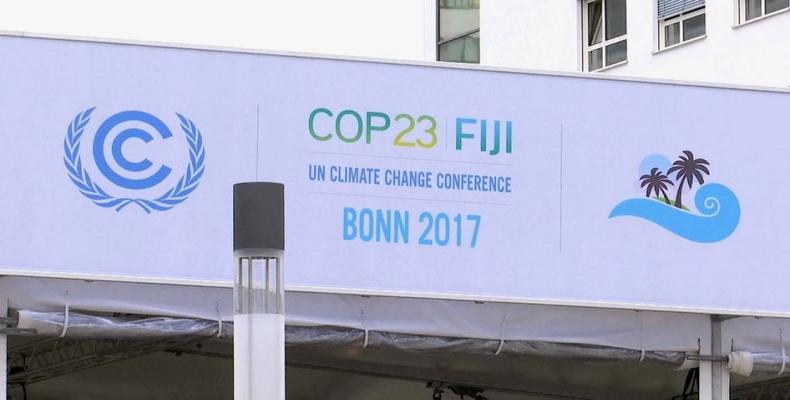Bonn, November 14 (RHC)-- Climate change imperils one in four UN-listed natural heritage sites, including coral reefs, glaciers, and wetlands -- nearly double the number from just three years ago, according to a new report.
The number of natural sites at risk has grown to 62 from 35 in 2014, when one in seven were listed, according to the International Union for Conservation of Nature (IUCN), which released the report at UN climate talks in Bonn, Germany.
Among the ecosystems most threatened by global warming are coral reefs which bleach as oceans heat up, and glaciers which melt. "Climate change acts fast and is not sparing the finest treasures of our planet," said IUCN director general Inger Andersen.
"The increase and the speed in which we are seeing this trend shift over just three years has been shocking to us, and the report warns that this number is likely to grow," Andersen told journalists in Bonn.
The report found that 29 percent of UNESCO natural sites faced "significant" threats, and seven percent -- including the Everglades National Park in the United States and Lake Turkana in Kenya -- had a "critical" outlook.
"The scale and pace at which it (climate change) is damaging our natural heritage underline the need for urgent and ambitious national commitments and actions to implement the Paris Agreement," said Andersen.
Negotiators are gathered in Bonn to work out a nuts-and-bolts rulebook for executing the pact adopted by nearly 200 countries in the French capital in 2015. The agreement seeks to limit average global warming caused by greenhouse gases from fossil-fuel burning to under two degrees Celsius (3.6 degrees Fahrenheit) over pre-industrial levels, and to 1.5 C if possible.
The 1 C mark has already been passed, and scientists say that on current country pledges to cut emissions, the world is headed for a 3 C future. The IUCN monitors more than 200 natural heritage sites listed by the UN’s cultural agency (UNESCO).
Three World Heritage-listed coral reefs -- the Aldabra Atoll in the Indian Ocean, the Belize Barrier Reef in the Atlantic, and Australia's Great Barrier Reef, the biggest on Earth -- have been affected by "devastating" bleaching events over the last three years, said the IUCN report.
Corals "bleach" when they are stressed by environmental changes -- due to ocean warming or pollution. The corals expel the colorful algae that live in them, and turn bone white.
"Retreating glaciers, also resulting from rising temperatures, threaten sites such as Kilimanjaro National Park, which boasts Africa's highest peak, and the Swiss Alps Jungfrau-Aletsch, home to the largest Alpine glacier," said the union. Wetlands, low-lying deltas, permafrost and fire-sensitive ecosystems are also affected by changes to Earth's climate, it added.
Harm to natural sites endangers local economies and livelihoods, the IUCN said. "In Peru's Huascaran National Park, for example, melting glaciers affect water supplies and contaminate water and soil due to the release of heavy metals previously trapped under ice."
Only invasive plant and animal species surpassed climate change as a risk to natural heritage sites, said the union. And climate change boosts their spread.
Countries assume responsibility under the World Heritage Convention to protect listed sites within their borders. The report said the management of heritage sites has declined since 2014, "notably due to insufficient funding."
The Bonn meeting is the first of UN climate envoys since U.S. President Donald Trump said he would pull the United States out of the hard-fought Paris Agreement, a move many fear will make the 2 C goal that much harder to reach.


